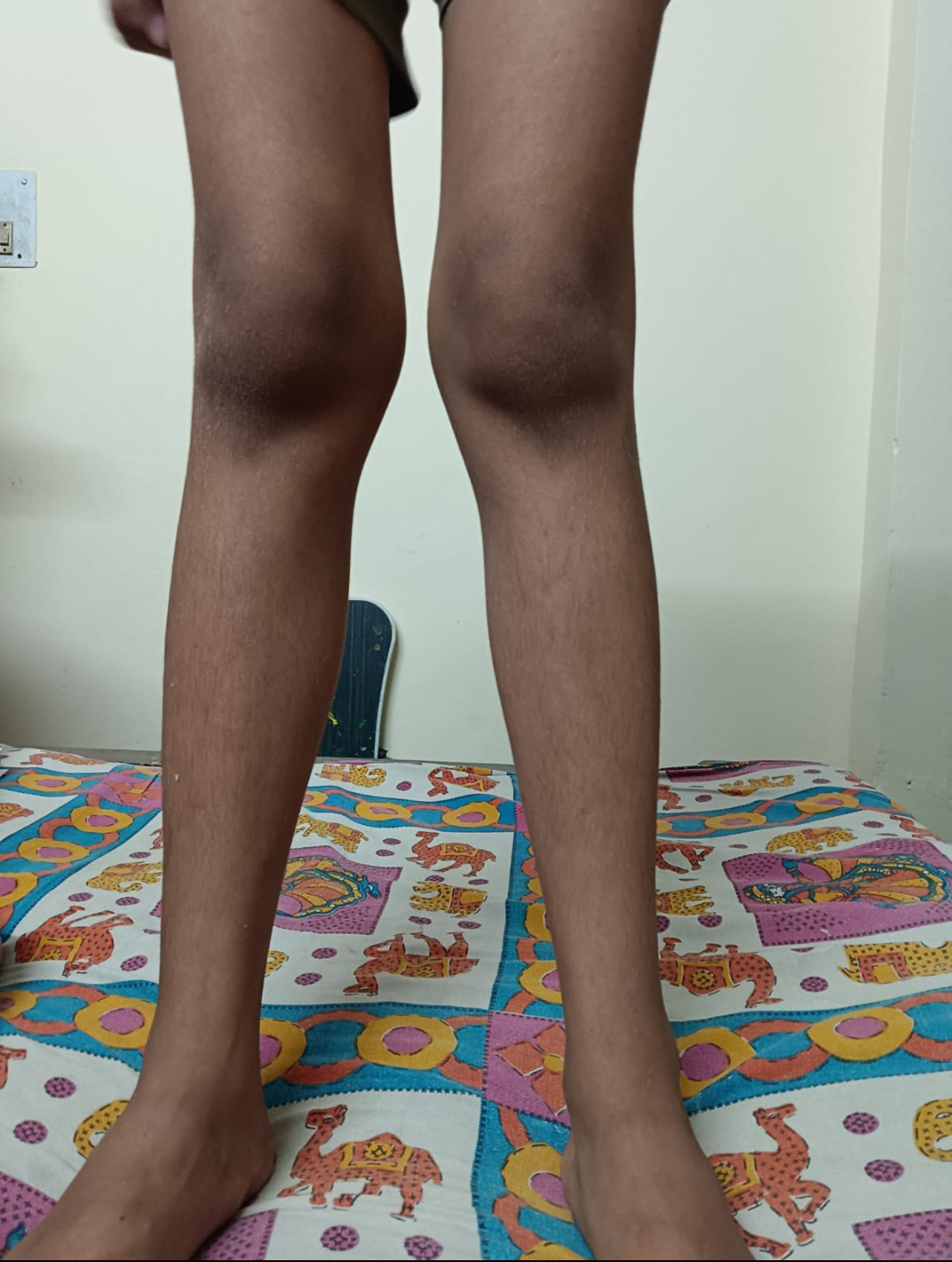is there anyone who had corrected their knock knees by exercise only?
Yes, many people have successfully corrected knock knees (genu varum) through exercise and physical therapy. While severe cases may require surgical intervention, mild to moderate knock knees can be improved with targeted exercises and stretches.
Exercises that can help correct knock knees include:
1. Straight leg raises
2. Quad sets
3. Straight leg lifts
4. Calf stretches
5. Hip abductor strengthening exercises
6. Leg press with feet together
7. Single-leg squats
8. Balance exercises
It's essential to note that:
- Correction may take time (several months to a few years)
- Consistency and patience are crucial.
- Exercises should be done under the guidance of a professional physical therapist.
- Results may vary depending on the severity of the condition and individual factors.
Many people have shared their success stories online, and some have even documented their progress through videos and blog posts. If you want to see here is a beautiful article posted by Physical therapist Dr Shailendra Chourey.
If you're considering exercise-based correction, consult with a healthcare professional to create a personalized plan.
Is it possible to fix knock knees without surgery?
Yes, it is possible to fix knock knees without surgery, depending on the severity of the condition. Mild to moderate knock knees can be improved or corrected with:
1. Physical therapy: Targeted exercises and stretches can strengthen surrounding muscles, improving alignment and reducing knock knees.
2. Orthotics and shoe inserts: Custom orthotics or shoe inserts can help redistribute weight and pressure, reducing strain on the knees.
3. Bracing: Knee braces or supports can provide stability and alignment.
4. Exercise and stretching: Regular exercises, like those I mentioned earlier, can help improve knee alignment and strength.
5. Weight management: Maintaining a healthy weight can reduce pressure on the knees.
However, severe knock knees or those caused by underlying conditions like osteoarthritis or bone deformities may require surgical intervention.
It's essential to consult with a healthcare professional, such as an physical therapist, to determine the best course of treatment for your specific case. They will assess the severity of your knock knees and recommend a personalized treatment plan.
Can knock knees correct itself?
Yes, knock knees (genu varum) can correct itself in some cases, especially in children. Knock knees are common in young children, and in most cases, they self-correct as the child grows and develops.
In children:
- Knock knees often correct themselves by age 5-7 years.
- Mild cases may correct spontaneously without treatment.
- More severe cases may require monitoring and potential intervention.
In adults:
- Self-correction is less likely, but mild cases may still improve with exercise and physical therapy.
- More severe cases or those caused by underlying conditions may require treatment or surgery.
Factors that influence self-correction include:
- Age
- Severity of knock knees
- Presence of underlying conditions (e.g., osteoarthritis, bone deformities)
- Overall health and muscle strength
If you're concerned about knock knees, consult a healthcare professional for guidance and monitoring. They can assess the severity and provide personalized advice.
Has anyone cured knock knees with exercise?
Yes, many people have successfully improved or cured their knock knees with exercise and physical therapy. While results may vary, numerous case studies and testimonials demonstrate the effectiveness of exercise-based correction.
Some examples:
- A study published in the Journal of Orthopaedic and Sports Physical Therapy found that 80% of participants with mild to moderate knock knees showed significant improvement after a 12-week exercise program.
- A case study published in the Journal of Bodywork and Movement Therapies reported a 25-year-old woman with severe knock knees who achieved significant correction after a 6-month exercise program.
- Online forums and social media groups feature numerous testimonials from individuals who have improved or corrected their knock knees through exercise and physical therapy.
Effective exercises for knock knees include:
- Strengthening exercises for the hip abductors, quadriceps, and calf muscles.
- Stretching exercises for the hip adductors, hamstrings, and calf muscles.
- Balance and proprioception exercises.
- Gait training and functional activities.
It's essential to work with a physical therapist to develop a personalized exercise program and monitor progress.
Can knock knees be corrected in adults by exercise?
Yes, knock knees (genu varum) can be improved or corrected in adults through exercise and physical therapy, but the extent of correction may vary. While adults may not experience the same level of spontaneous correction as children, targeted exercises can still:
1. Improve knee alignment
2. Strengthen surrounding muscles
3. Enhance joint stability
4. Reduce pain and discomfort
5. Improve overall knee function
However, it's essential to note that:
1. Severity: More severe cases may be less responsive to exercise-based correction.
2. Age: Adults may require more time and consistent effort to see noticeable improvements.
3. Underlying conditions: Certain conditions, like osteoarthritis or bone deformities, may limit the effectiveness of exercise-based correction.
Effective exercises for adults with knock knees include:
1. Hip abductor strengthening
2. Quadriceps strengthening
3. Calf stretching
4. Hip adductor stretching
5. Balance and proprioception exercises
6. Functional activities like squats, lunges, and step-ups
Consult with a physical therapist to develop a personalized exercise program and monitor progress. They will help determine the best course of treatment for your specific case.

Comments
Post a Comment